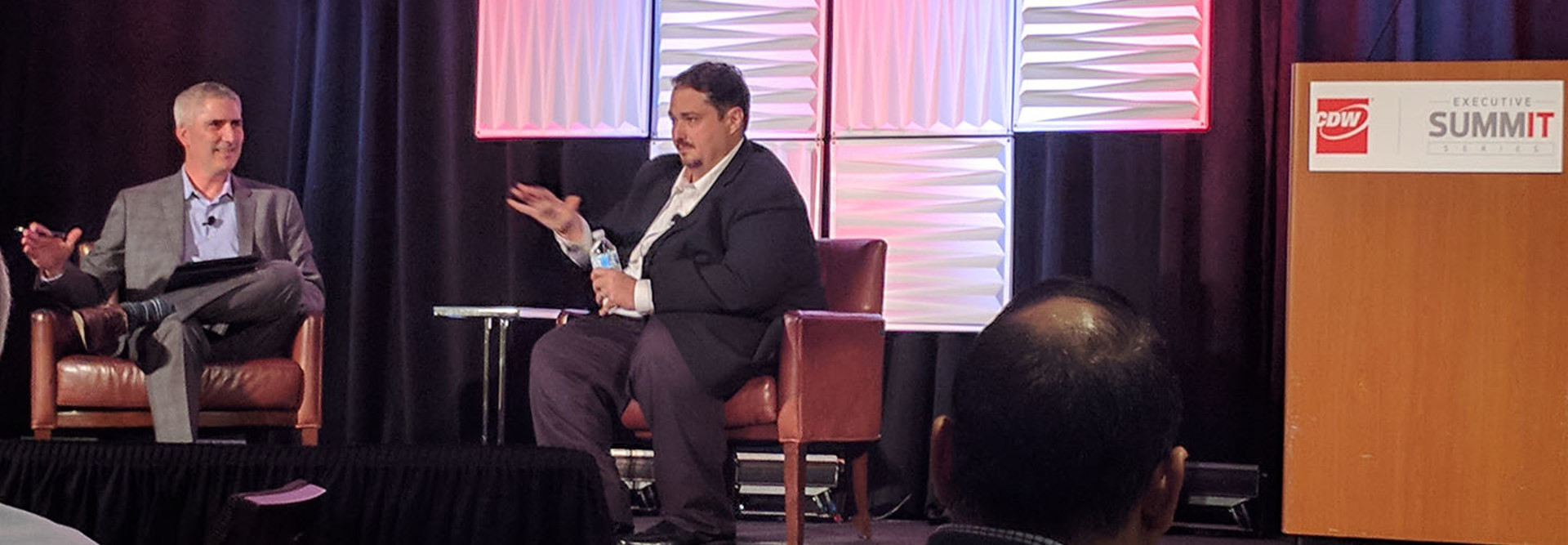How Collaboration Tools Fostered Culture Change for Optima Healthcare Solutions
Collaboration isn’t just a buzzword, it’s a necessary piece of the puzzle for any organization that wants to run smoothly, effectively and innovatively. But collaboration that results in true innovation requires more than just getting everyone in a room together; it should also empower individual employees to work and meet the way they feel most comfortable and productive.
Herein lies the challenge for IT teams, and the issue that Jason James, CIO at Optima Healthcare Solutions, came up against when he joined the organization two years ago.
“Healthcare is historically not driven by innovation,” said James, speaking at CDW’s Future of Work SummIT in Atlanta on Tuesday. “It should be, but it’s not.”
SEE MORE: Get started on transformation with digital workspace solutions.
He noted that the industry is often viewed internally as being too bogged down by regulation to make innovation a priority. Moreover, Optima Healthcare Solutions, which provides Software as a Service to outpatient practices, was experiencing uptime, skill and collaboration challenges.
James was determined not to “let compliance equal complacency,” and set out on a path for digital transformation that aimed to introduce collaboration tools — the organization was using email as its only tool — and enable a remote workforce. At the time, only one employee was working remotely.
Over the course of a year, James and his team set their sights on supporting BYOD for employees and empowering a remote workforce. As a result, the company has seen significant improvements in workflow and collaboration, and more than half the company now works remotely two to three times per week.
“Most of my team and I see each other four or five times a year, but because of the collaborative nature of tools I can interact with them on a daily basis. We have video chats, we share files in real time — we are no longer tied to just email. So, no matter where someone works, they can still do their job not only securely but also effectively,” he said.
4 Ways to Better Champion Collaboration Tools
But digital transformation doesn’t happen in a vacuum, and introducing tools was only half the story for Optima Healthcare Solutions. James sought not just to enable, but to empower a digital workforce. Introducing a new collaborative culture required buy-in from employees.
“All transformation is a cultural transformation,” he noted. “And if you’re going to be successful with digital transformation you can’t force technology on people. People have to get excited.”
VIDEO: Accelerate workplace evolution with the right tech solutions.
He offered the following advice:
1. Understand the Business: James recommended sitting down with both employees and C-suite executives as often as necessary to gain a full understanding of what tools can best empower the workforce, as well as the best way to bring them to bear.
2. Be Open: Saying no to IT needs or ideas is a recipe for introducing shadow IT into an organization. But by being open to suggestions and feedback, CIOs can avoid this. “No one is going to go to shadow IT if you can do it cheaper and better,” said James.
3. Pay Attention to Employees: Engagement isn’t all about technology. James introduced “Mentorship Mondays,” which helped to build trust between himself and members of his team and helped engagement and problem-solving to flourish.
4. Create Cheerleaders: From the CEO to enthusiastic change agents, having advocates for technology within the organization will be far more effective than simply laying out adoption mandates.
Approaching transformation in this way has paid off not just for Optima Healthcare Solutions, but for James’s IT department in particular, as he has retained 98 percent of his employees during his two-year tenure.
“Through the projects I have undertaken with my own team, our IT department has the lowest attrition rate across the entire company because we made cultural adaptation a priority,” he said.
Check out our event page for more articles and videos from the CDW Future of Work SummIT.










